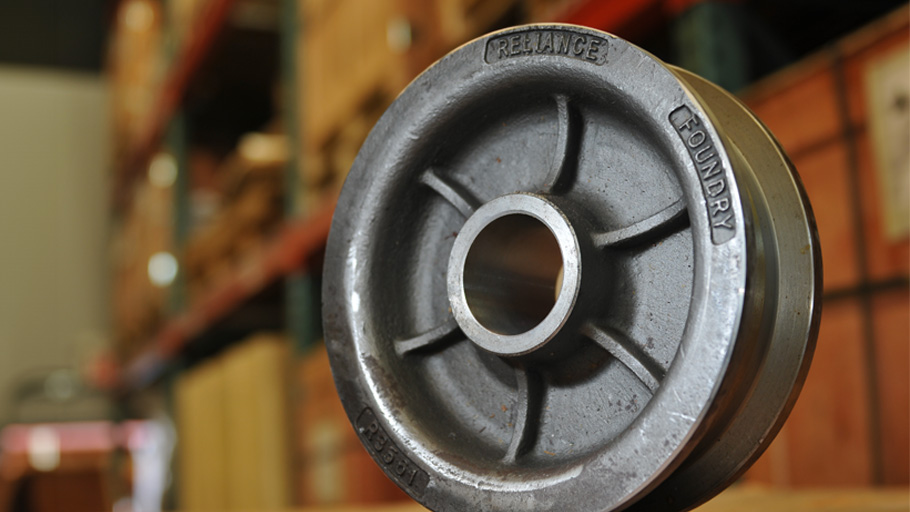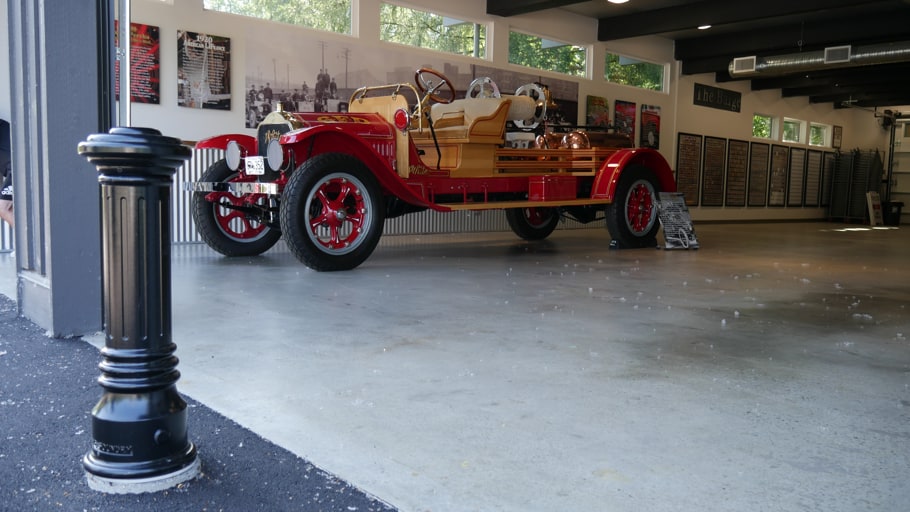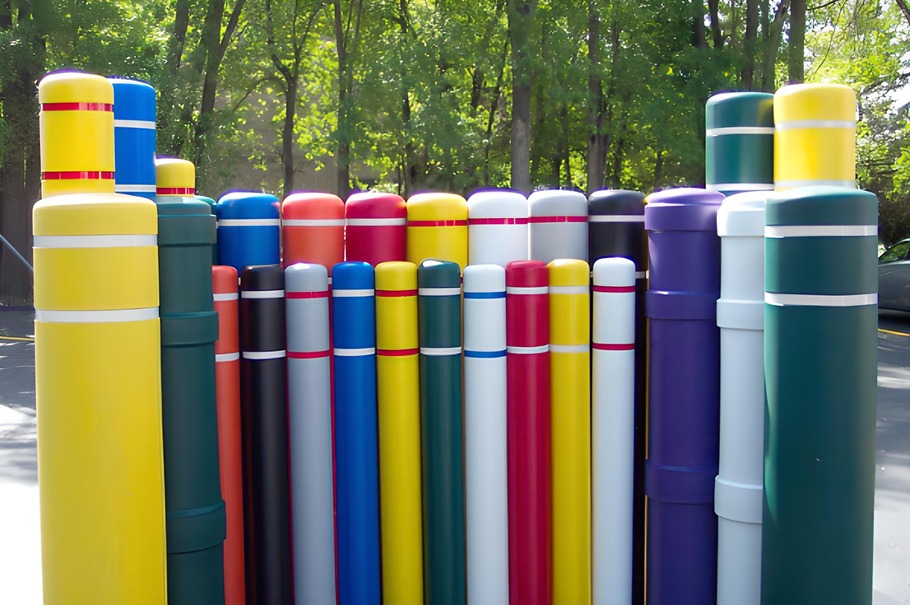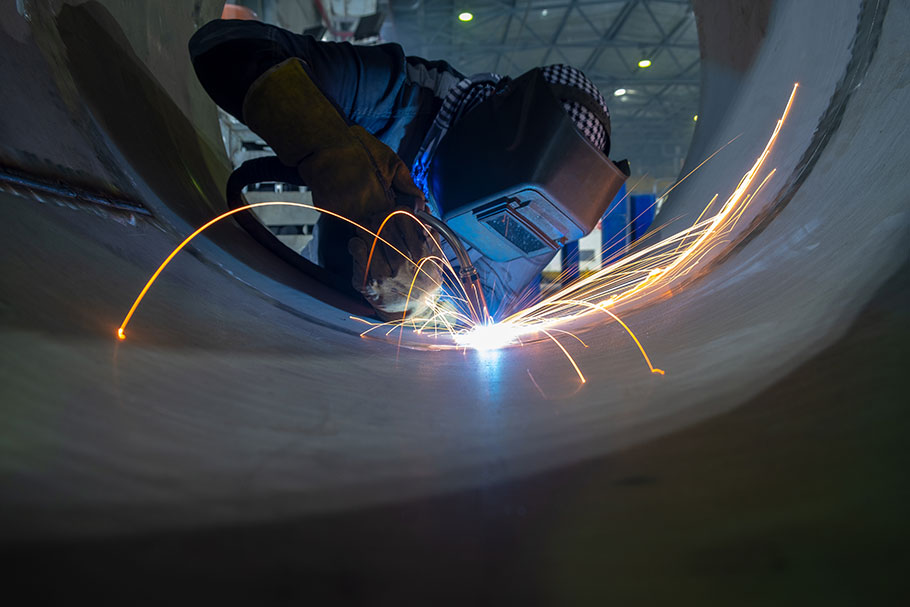The defining characteristics of steel
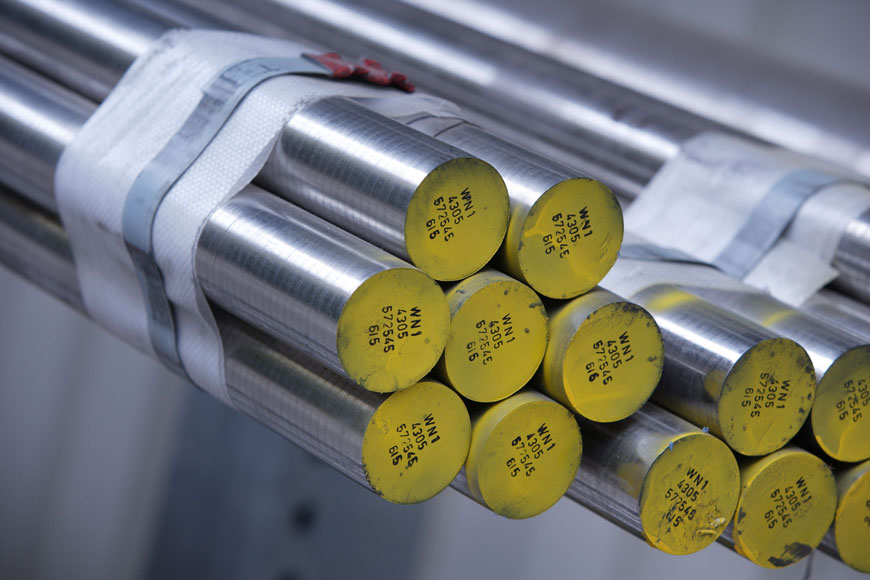
Steel grading systems consider chemical composition, treatment, and mechanical properties to enable fabricators to select the appropriate product for their application. Aside from the actual percentage of carbon and other alloys in the material, the microstructure also has a significant influence on the mechanical properties of steel.
It is important to understand the definition of microstructure—and the way the microstructure of steel can be manipulated using hot and cold forming and after manufacturing. These techniques can be used to develop products with specific mechanical properties. However, manipulating composition and microstructure will result in a trade-off between different properties. For example, harder steel may end up with reduced strength.
Microstructure
The microstructure of a material is the way in which the molecules are joined together with forces at work between those molecules. Heating and cooling processes are used to change the microstructure from one form to another, thereby changing the properties of the material.
Microstructure is not observable to the naked eye but can be studied under a microscope. Steel can adopt several distinct microstructures—ferrite, pearlite, martensite, cementite, and austenite.
Ferrite
Ferrite is the term used for the molecular structure of pure iron at room temperature. Steel with very low carbon content will also adopt this same microstructure. The characteristic shape of ferrite is a body-centered cubic (BCC) crystal structure. Visually, imagine a cube with one molecule at each corner and a molecule in the center of the cube. The molecules are more loosely packed in BCC than in other microstructures which contain more molecules within each cube. However, the amount of carbon which can be added without changing the ferrite microstructure is low at only 0.006% at room temperature.
Austenite
Austenite is a microstructure that is formed when iron based alloys are heated above 1500˚F but below 1800˚F. If the correct alloy is present in the steel, such as nickel, the material will keep this microstructure even when cooled. The characteristic shape of austenite is a face-centered cubic (FCC) crystal structure. Visually, imagine a cube with one molecule at each corner and a molecule in the center of each side of the cube. The molecules in an austenite configuration are more densely packed than those of ferrite. Austenite can contain up to 2% carbon and is a common microstructure of stainless steel.
Cementite
When carbon steel is heated into the austenite range—and then cooled without any alloy present to keep the austenite shape—the microstructure reverts to the ferrite form. However, if the carbon content is greater than 0.006%, the excess carbon atoms combine with iron to form a chemical compound called iron carbide (Fe3C), also known as cementite. Cementite does not occur on its own because some of the material will remain in ferrite form.
Pearlite
Pearlite is a laminated structure formed by alternate layers of ferrite and cementite. It occurs when steel is cooled slowly, forming a eutectic mixture. A eutectic mixture is one in which two molten materials crystalize simultaneously. Under these conditions, ferrite and cementite are both being formed at the same time, resulting in alternate layers within the microstructure.
Martensite
Martensite has a body-centered tetragonal crystalline structure. This microcrystalline form is attained by cooling steel rapidly which causes carbon atoms to be trapped inside the iron lattice. The net result is a very hard, needle-like structure of iron and carbon. Steel with a martensite microcrystalline structure is usually a low carbon steel alloy containing about 12% chromium.
It is important for steel manufacturers and consumers to understand the microstructure of steel and how it affects the mechanical properties of the material. Carbon content, alloy concentrations, and finishing methods all have an impact on the microstructure and can therefore be used to manipulate the properties of the finished product. It is possible for two samples with the same alloy content to have different microstructures depending on the finishing methods and heat treatments used.
Hot and cold forming
Once molten steel is cast, it must be formed into its final shape and then finished to prevent corrosion. Steel is usually cast into machine-ready forms: blooms, billets, and slabs. The cast shapes are then formed by rolling. Rolling can be carried out hot, warm, or cold depending on the material and target application. During rolling, compression deformation is accomplished by using two work rolls. The rolls rotate rapidly to simultaneously pull and squeeze the steel between them.
Cold forming
Cold forming is the process of rolling steel below its recrystallization temperature. The pressure exerted by the rolls on the steel causes dislocations in the microstructure of the material, therefore creating grains in the material. As these dislocations build up, the steel becomes harder and more difficult to deform further. Cold rolling also causes the steel to become brittle, which can be overcome through heat treatment.
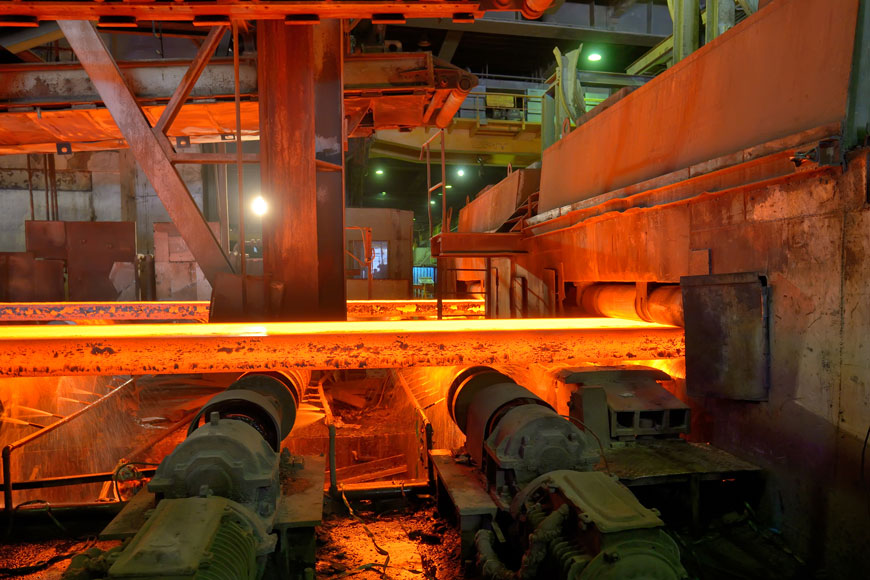
After rolling is complete, the steel pieces are finished using secondary processing techniques to prevent corrosion and improve mechanical properties:
- Coating
- Surface treatment
- Heat treatment
Heat treatment
Effects of heat treatment
The microstructure of steel can be altered through controlled heating and cooling. This has led to the development of various methods of heat treatment to modify the microstructure and attain a desired change in mechanical properties.
Steel microstructures experience changing phases at specific temperatures. Heat treatment is based on understanding and manipulating certain transformation points:
- Normalizing temperature
Austenite is the phase from which other structures are formed. Most heat treatments begin by heating the steel to a uniform austenitic phase of 1500–1800°F. - Upper critical temperature
The upper critical temperature is the point below which cementite or ferrite begin to form. This occurs when steel is cooling from the normalizing temperature. Depending on carbon content, this point rests between 1333–1670°F. - Lower critical temperature
Lower critical temperature is the point of austenite-to-pearlite transformation. Austenite cannot exist below the lower critical temperature of 1333°F.
The rate of cooling—from the normalizing temperature and through to the upper and lower critical temperatures—will determine the resulting steel microstructure at room temperature.
Heat treatment includes a range of processes, including annealing, quenching, and tempering. In steel, ductility and strength have an inverse relationship. Heat treatments can either increase ductility at the expense of strength, or vice versa.
Types of heat treatment
Spheroidizing
Spheroidizing occurs when carbon steel is heated to approximately 1290°F for 30 hours. The layers of cementite in the pearlite microstructure are transformed into spheroid, resulting in the softest and most ductile form of steel.
Full annealing
Carbon steel is annealed by first heating slightly above the upper critical temperature—maintaining that temperature for an hour—then cooling at a rate of approximately 36°F per hour. This process produces a coarse pearlitic structure that is ductile with no internal stresses.
Process annealing
Process annealing relieves stress in cold-worked, low-carbon steel (> 0.3% C). The steel is heated to 1025–1292°F for one hour. Dislocations in the microstructure are repaired by the reforming of the crystal before cooling.
Isothermal annealing
High carbon steel is first heated above the upper critical temperature. Then it is maintained, cooled to the lower critical temperature, and maintained once again. It is then gradually cooled to room temperature. This process ensures that the material reaches a uniform temperature and microstructure before the next cooling step.
Normalizing
Carbon steel is heated to the normalizing temperature for one hour. At this point, the steel completely enters the austenite phase. The steel is then air cooled. Normalizing creates a fine pearlitic microstructure with high strength and hardness.
Quenching
Medium or high carbon steel is heated to the normalizing temperature, then quenched (rapid cooling by submersion in water, brine, or oil) to the upper critical temperature. The quenching process produces a martensitic structure—extremely hard, but brittle.
Tempering quenched steel
The most common heat treatment because its outcome can be accurately predicted. Quenched steel is reheated to a temperature below the lower critical point, then cooled. Temperatures vary according to intended outcome—with the 298–401°F range being the most common. This process restores some toughness to the brittle quenched steel by allowing some spheroidite to form.
Mechanical properties
Mechanical properties are measured in accordance with international standards such as the ASTM (American Society for Testing and Materials) or SAE (Society of Automotive Engineers).
Key mechanical properties of steel
Hardness
Hardness is the ability of a material to withstand abrasion. Increasing hardness can be achieved by raising the carbon content, and by quenching which leads to the formation of martensite.
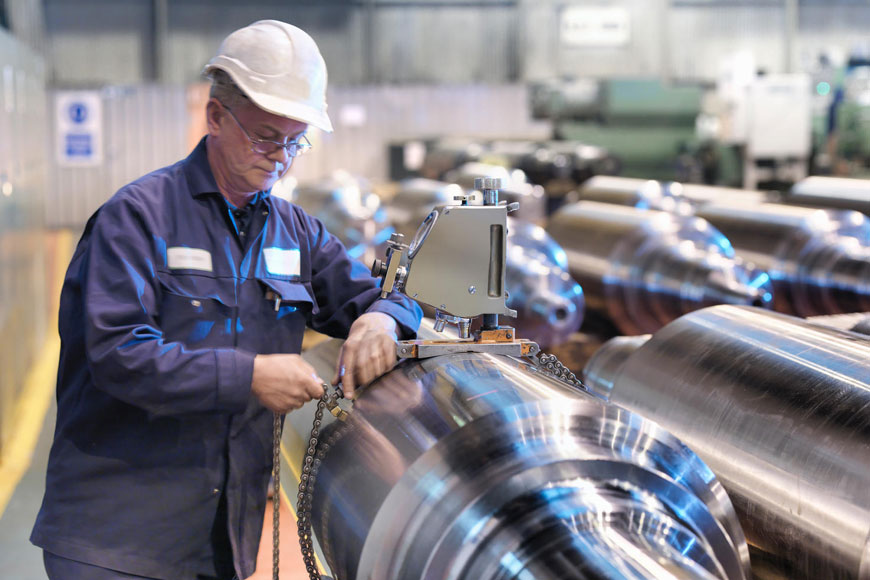
Strength
Metal strength is the amount of force necessary to deform a material. Normalizing a piece of steel will improve its strength by creating a consistent microstructure throughout the material.
Ductility
Ductility is the ability of a metal to deform under tensile stress. Cold-formed steel has a low ductility due to the dislocations in the microstructure. Process annealing will improve this by enabling crystals to reform and therefore eliminate some of the dislocations.
Toughness
Toughness is the ability to withstand stress without breaking. Quenched steel can be made tougher by tempering which adds spheroids to the microstructure.
Machinability
Machinability is the ease with which steel can be shaped by cutting, grinding, or drilling. Machinability is influenced primarily by hardness. The harder the material, the more difficult to machine.
Weldability
Weldability is the ability of steel to be welded without defects. It is primarily dependent on chemical composition and heat treatment. Melting point, as well as electrical and heat conductivity, all have an influence on the weldability of a material.
For more information on the mechanical properties and testing of steel, see the properties and production of steel castings.
Quality descriptors
Quality descriptors are applied to steel products in broad categories such as merchant, industrial, or structural quality. These labels mark certain steel as being suitable for specific applications and fabrication processes, allowing for faster market navigation and decision making. Steel is placed in specific categories based on several different factors:
- Internal soundness
- Chemical composition and uniformity
- Degree of surface imperfections
- Extent of testing during manufacturing
- The number, size, and distribution of inclusions
- Hardenability
Steel grading systems
Specifications, such as those issued by ASTM, AISI (American Iron and Steel Institute), and SAE, provide a standard language for engineers, fabricators, and consumers to communicate the properties of steel. Grading is often very specific—including everything from chemical compositions, physical properties, heat treatments, fabrication processes, and forms.
ASTM
The ASTM system uses a descriptive letter followed by a sequential number. For example, ‘A’ indicates a ferrous metal, and ’53’ is the number assigned to galvanized carbon steel.
ASTM A53 would have the following properties:
- Chemical composition, Max %
- Carbon: 0.25 (Grade A), 0.30 (Grade B)
- Manganese: 0.95 (Grade A), 1.20 (Grade B)
- Phosphorous: 0.05
- Sulfur: 0.045
- Mechanical properties
- Tensile Strength, UTS: 330 MPa or 48,000 psi (Grade A), 414 MPa or 60,000 psi (Grade B)
- Tensile Strength, Yield: 207 MPa or 30,000 psi (Grade A), 241 MPa or 35,000 psi (Grade B)
- Form and treatment
- Pipe NPS 1/8 – NPS 26
- Galvanized steel
- Black and hot-dipped
- Zinc coated
- Welded and seamless
SAE
The AISI/SAE numbering system uses a 4-digit number for classification. The first two numbers indicate the steel type and alloying element concentration, and the last two numbers indicate carbon concentration.
For example, SAE 5130 describes a steel containing 1% Chromium and 0.30% Carbon. Letter prefixes are used as quality descriptors for merchant quality.



